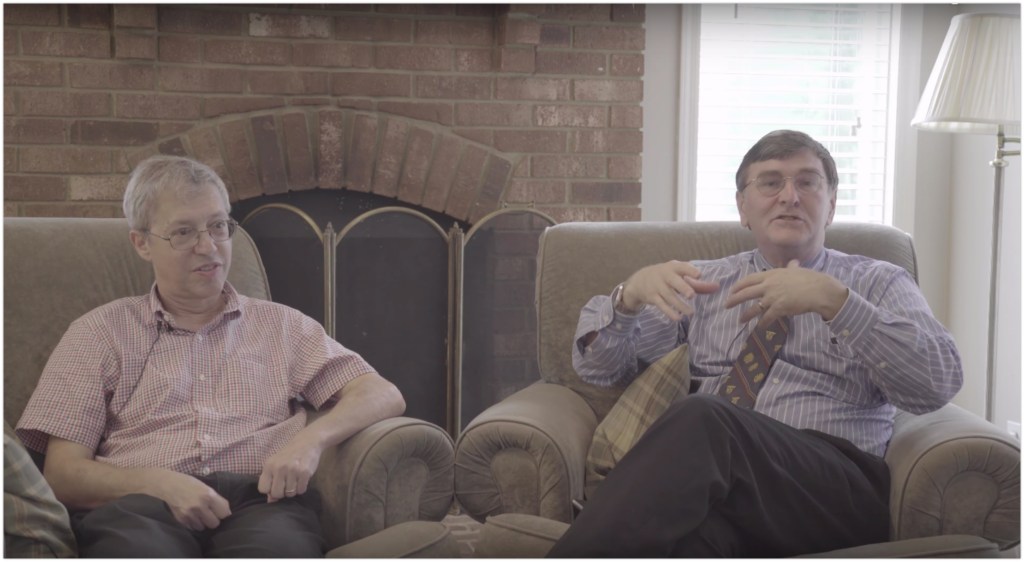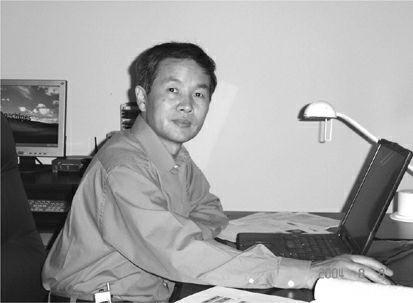Everyone’s always talking about blockchain this and blockchain that, but few know exactly how it works, and even fewer know who the founding fathers of blockchain are. Incredible and paradigm-shifting new technologies don’t just spring up out of thin air. They’re always built on compounding discoveries and ideas from thinkers and tinkerers who went before. Blockchain is no exception.
If you want to know the single inventor of blockchain as we think of it today, you’d be hard-pressed to find an answer. Probably the most well-known name is Satoshi Nakamoto who created Bitcoin and implemented the first decentralized blockchain with popular utility. But there are also people like cryptographer David Chaum, Wei Dai, and Adam Back who all contributed various pieces to the puzzle. Here’s a bit about some of the prominent founding fathers of blockchain.
David Chaum
Back in the days of cypherpunks, there was cryptographer David Chaum — a computer scientist at Berkeley. He’s often credited as one of the main founding fathers of blockchain because in a computer science dissertation in 1982, he outlined a blockchain concept very similar to how Satoshi describes Bitcoin in its whitepaper. Chaum’s various papers detailed a vault blockchain system that time-stamped data to prove its history and used blind signatures to verify transactions.
His eCash system also used those blind signatures and, for the first time, solved the double-spend problem in digital currencies. In the same way a digital word document can be copied and sent as many times as someone wants to copy it, before Chaum’s system, currency was vulnerable to being copied, making it impossible to limit how many times someone could spend it.
The public-key cryptography Chaum used allowed the creation of a blind signature which scrambles, signs, sends, and verifies transactions, making each copy traceable and unalterable. This was the foundation from which the next founding fathers of blockchain began to build.
Haber and Stornetta were two scientists who wanted to work on authentication of document integrity, meaning, create a history for documents that didn’t require a trusted third party to verify. If the creator of a document wants to prove it has not been altered, the easiest way is to get a third party to vouch for it. However, that creates a problem in needing to trust that the two parties are not conspiring together to falsify the document. Haber and Stornetta realized that, in theory, a conspiracy could expand out to the entire world, compromising security infinitely.
In 1990, the pair published a paper called “How to Timestamp a Digital Document.” In it, they created time stamping for the purpose of authentication. Think of sending yourself a letter in the mail to prove the time of its creation through the postmark. This is what they wanted to do with digital documents.
After a document was time stamped, the creator kept the document but created a hash identifier for it. That identifier was then kept in a third-party database Haber and Stornetta owned. If the document needed verification, it could be cross-checked with the hash to see if the two matched. The trust issue still plagued their centralized database, however, so they came up with an innovative solution.
By publishing a list of the week’s hash identifiers in the New York Times, the database records were sufficiently distributed, becoming impossible to alter. If someone wanted to, they’d have to find and change every copy of the paper. The NYT still publishes the list today.
Adam Back
Next came Adam Back and Hashcash in 1997. He was trying to solve the problem of spam emails. Because it was so much faster and cheaper to send mass emails than mass mail which has printing and postage costs, spam was becoming a big problem for email in the early days of the internet.
Back’s Hashcash used proof-of-work which created a “cost” to sending emails. By forcing a computer to solve some public-key cryptography in order to send emails, it would require processing power and, as a result, time and energy. The cost of this computer work was small enough that sending a few emails wasn’t a problem — only in trying to send tons of useless emails did the processing power outweigh the benefit of spamming people’s inboxes with ads.
This “proof-of-work” system placed real value on hashing, and it was the only piece of the Bitcoin blockchain that system cryptographer David Chaum did not write about.
Wei Dai
By 1998, Wei Dai’s b-money was working on another problem — centralized ledgers. Similar to Haber and Stornetta’s distributed storage in the NYT, Dai wanted a way to avoid keeping a database in a centralized location. Because centralized databases can be so easily compromised, distributing the ledger makes it infinitely harder to corrupt.
While Haber and Stornetta modeled the idea for the first decentralized blockchain, it was still partly analog, being printed in the NYT. Dai solved this digitally with b-money. Its ledger was distributed among all the users. This piece of the blockchain puzzle was also crucial to the creation of Bitcoin.
Satoshi Nakamoto
Standing on the legacy of those impressive founding fathers of blockchain, Satoshi Nakamoto was able to create the first decentralized blockchain that gained popularity and user adoption. Taking all the elements that had been created before, Nakamoto mixed them into a cryptography cocktail that succeeded on a large scale for the first time.
The whitepaper was released on Oct 31, 2008, and now, about 15 years later, cryptocurrency is about a 1.3 trillion dollar market. Satoshi created a proof-of-work system that solved the double-spend problem and distributed the ledger, making it trustless and immutable.
Want to understand more about the founding fathers of blockchain?
Cryptography and blockchain are complex topics that took multiple great minds many years to create. Of course, it cannot be completely explained in a single blog post. If you want to know about blind signatures, read David Chaum’s paper. If you want to learn about time stamping for document integrity, read Haber and Stornetta. Adam Back’s Hashcash whitepaper will explain hashing and proof-of-work for you. And Wei Dai’s b-money idea can explain distributed ledgers.
Hopefully after reading it all, you’ll gain a sense of how the founding fathers of blockchain all contributed their own ideas to the amazing technology we all know as “blockchain” today.
About the Author

Emily Weber
About Decentral Publishing
Decentral Publishing is dedicated to producing content through our blog, eBooks, and docu-series to help our readers deepen their knowledge of cryptocurrency and related topics. Do you have a fresh perspective or any other topics worth discussing? Keep the conversation going with us online at: Facebook, Twitter, Instagram, and LinkedIn.







